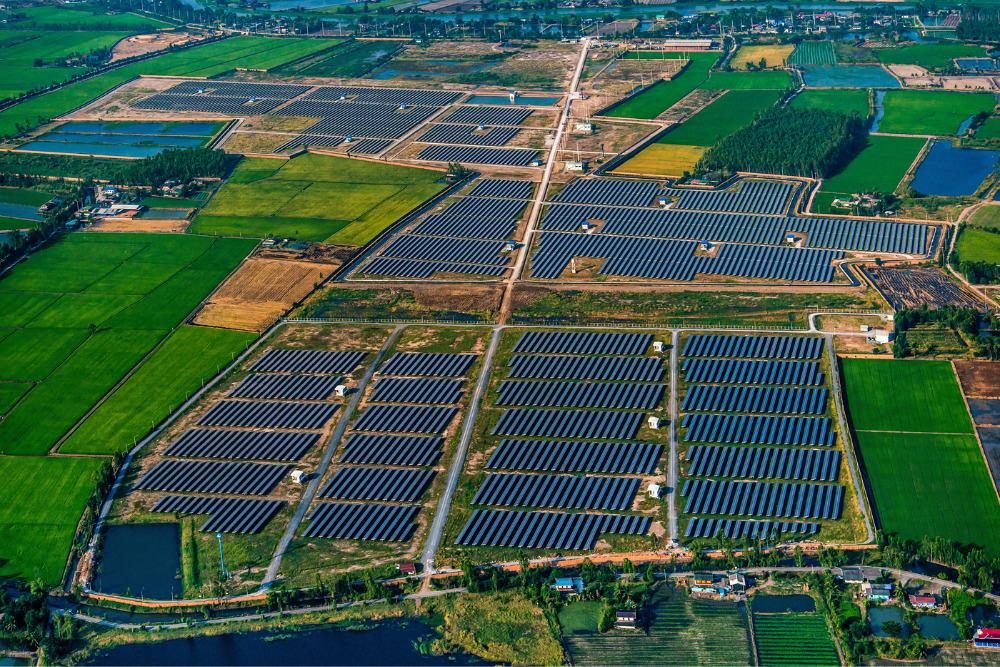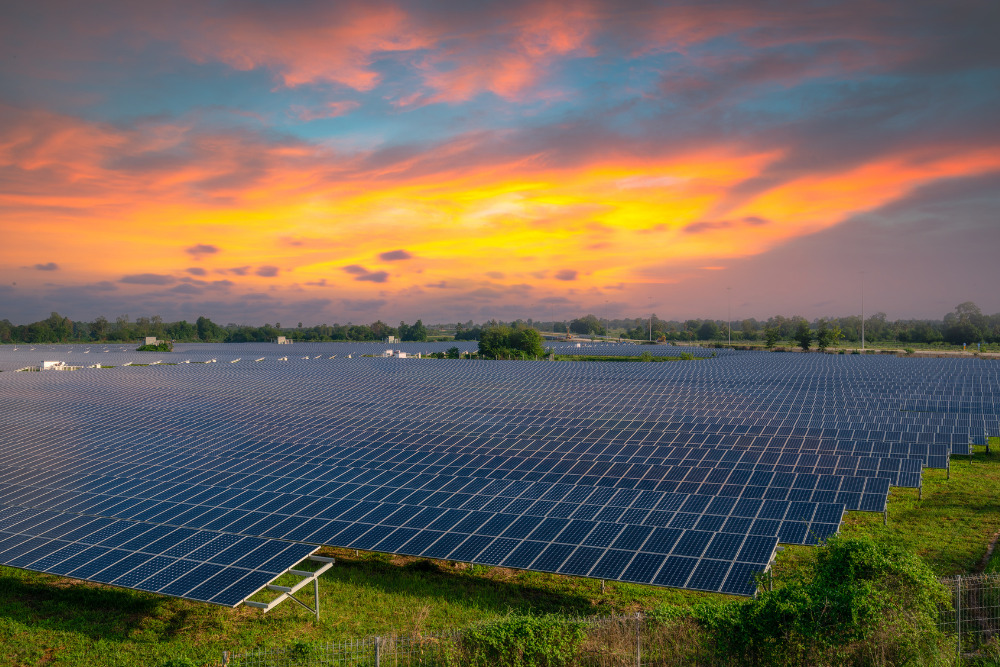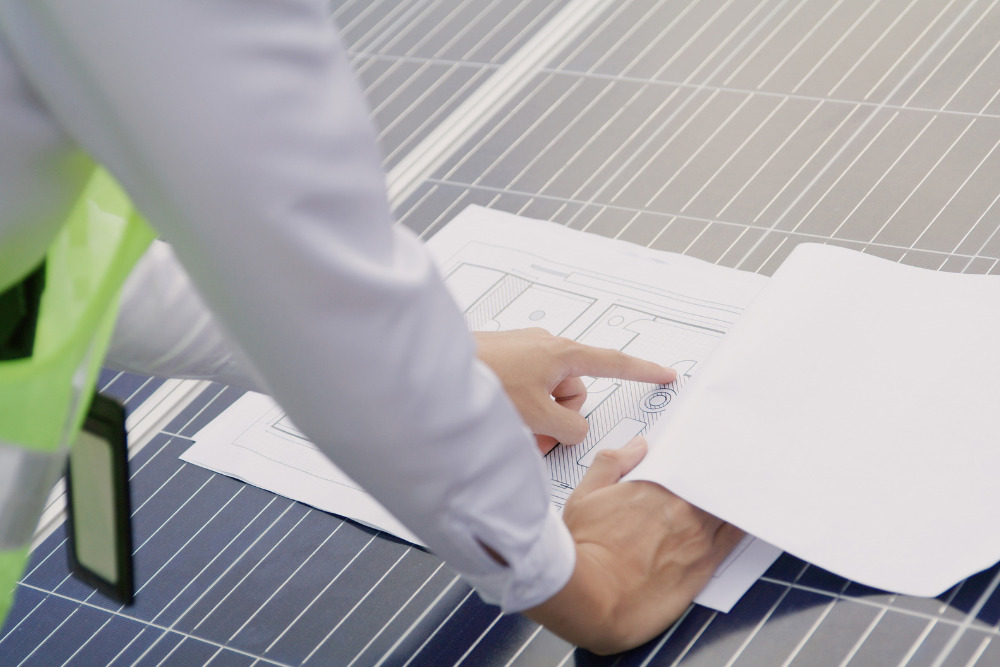
In just five minutes, enough sunlight shines on the continental United States to power the country for an entire month. The challenge is the land footprint needed to install enough solar panels to capture the energy. Careful planning and creativity are needed to create sustainable land use.
Solar Panel Land Use Applications
When it comes to solar energy projects, there are several land use applications, including:
- Solar farm: Sometimes referred to as a solar garden or a solar photovoltaic power station, a solar farm is a large ground-mounted solar array that typically includes thousands of solar panels. Some are local community solar projects, while utility companies and public-private partnerships may purchase energy from solar farms to support the grid in their coverage area.
- Utility-scale solar plants: This large-scale renewable energy source feeds energy into the electric grid. Almost every utility-scale solar facility has a PPA (Power Purchase Agreement) with a utility company that guarantees a market for its electricity generation for a fixed amount of time. It can utilize primary solar PV systems or concentrating solar power. Developing utility-scale solar power is one of the fastest ways to reduce carbon emissions.
- Floating solar: To cut down on the land use impact, the solar industry also offers floating solar which utilizes large bodies of water for its solar panels. The panels are affixed atop a buoyant structure that keeps them floating above the surface. A fairly new concept, floating solar panels are great for minimizing the loss of agricultural land.
- Rooftop solar energy systems: This type of energy development utilizes existing buildings to install solar panels. Local warehouses and large structures can ‘rent’ their rooftop space to an IPP (independent power provider). These are private facilities that own and operate their own solar energy technologies to generate power to sell to the grid. Whether commercial or residential, rooftop solar systems avoid the use of additional land for solar power systems.
- Dual land use: Dual land use, or co-location, is when solar panel systems and agricultural production co-exist in the same area. For example, flowers are planted to attract pollinators and wildlife, agricultural space is used for cattle to graze, and even crops are planted. Also known as agrivoltaics, this can be an excellent use of land management that increases sustainability.

The Importance Of Careful Planning For Solar Sites
There are several reasons why it is imperative to carefully plan for solar sites, including:
- Efficiency and land requirements: Higher efficiency means fewer panels and less land needed. Some utility-scale solar power plants may require between 5 and 10 acres per MW (megawatt) of energy-generating capacity. This can have a huge environmental and agricultural impact that requires extensive planning to ensure U.S. Department of Energy's land use guidelines for solar.
- Environmental considerations: It is important to avoid sensitive ecosystems when considering solar sites. Degraded or unusable land is usually considered first, as this will have less of an environmental impact. Erosion and runoff mitigation are important factors to consider as well, as they may have a negative impact on wildlife and surrounding ecosystems. Planting native vegetation around the solar power system minimizes impact and can attract pollinators, birds, and wildlife.
- Community engagement: Citizens and neighbors may think large solar installations are unsightly. However, involving them in the planning is a good way to educate them about sustainable energy and integrate solar land use into the local landscape.

Frequently Asked Questions About Solar Panel Land Use
How much land is used in the United States for solar panels?
Currently, the United States has 102.9 gigawatts of total solar installed capacity, which is equal to roughly 1034 square miles (about the size of Rhode Island). It generates enough electricity to power 18.6 million homes.
How much power does 1 acre of solar panels produce?
The answer to this question will largely depend on the geographical location, efficiency of the solar modules, and how much sunlight the solar arrays receive. Generally speaking, you can expect several hundred MWh of energy production per year for one acre of panels.
Are solar farms bad for wildlife?
Though they provide clean energy, solar farms can alter everything from sun exposure to surface temperatures, and even the amount of moisture present. Utility-scale photovoltaic systems have both negative and positive impacts on wildlife that must be weighed during the planning phase. Often, operators can take certain measures to mitigate the impact, such as planting shade-loving native plants under the panels to prevent erosion and maintain soil temperatures.
Why do farmers oppose solar farms?
Some farmers believe that solar farms are taking away from their agricultural land. By using acres of land for solar panels, they are keeping farmers from being able to utilize that land for farming and agricultural needs. Other reasons may include the fact that they believe solar panels to be unsightly and detract from the rural landscape.


